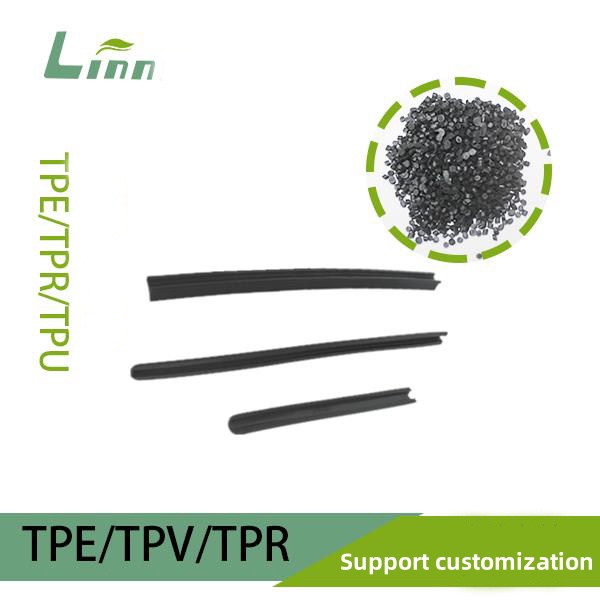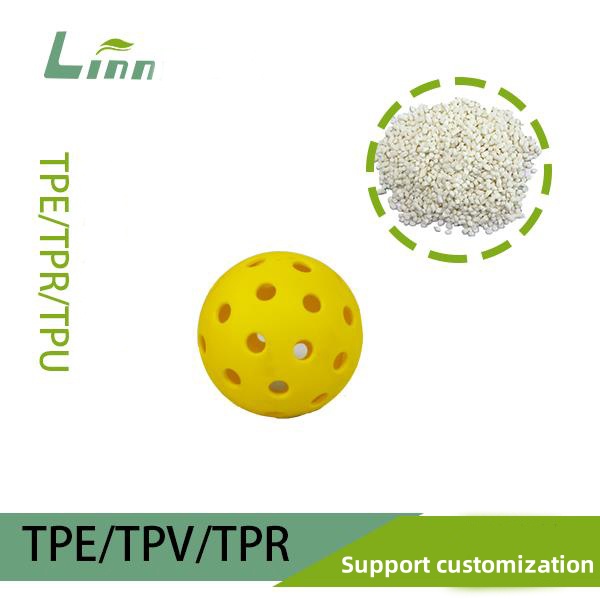As someone who has worked extensively in the research and application of TPE (Thermoplastic Elastomer) materials, I understand why TPE soft rubber is so popular. Its softness, durability, and eco-friendliness make it a go-to choice for toys, household items, medical devices, and more. However, one issue that many people encounter is odor. That unpleasant or strange smell can be bothersome and even raise concerns about product safety. In this article, I’ll dive deep into why TPE soft rubber sometimes smells, how to get rid of the odor, and ways to prevent it, all based on my hands-on experience in the field.

Why Does TPE Soft Rubber Have an Odor?
To tackle the problem, we first need to understand where the smell comes from. Over the years, I’ve worked with countless TPE materials and identified the main culprits behind the odor:
- Volatile Substances in Raw Materials
TPE soft rubber is made with additives like plasticizers, stabilizers, and fillers. During high-temperature processing, these additives can release volatile organic compounds (VOCs), which contribute to the odor. - Issues in Manufacturing
Poor control during production—such as overly high temperatures or uneven mixing—can cause the material to break down or leave behind chemical residues, resulting in a noticeable smell. - Storage and Transportation Conditions
If TPE products are stored in humid, sealed, or hot environments, they can absorb odors from the surroundings or develop smells due to material aging. - Low-Quality or Recycled Materials
Some manufacturers cut corners by using inferior raw materials or recycled TPE, which often carry strong odors and may even contain harmful substances.
Knowing these causes helps us find the right solutions to eliminate the problem.
How to Effectively Remove Odor from TPE Soft Rubber?
Through years of trial and error, I’ve tested various methods and narrowed down the most effective ways to remove TPE odor. Here’s a detailed breakdown of what works.
1. Ventilation and Airing Out
This is the simplest and most budget-friendly method. Placing TPE soft rubber products in a well-ventilated area—like a balcony or near an open window—for a few days can allow mild odors to dissipate naturally.
- Steps:
- Choose a shaded, airy spot to avoid direct sunlight, which can accelerate material aging.
- Air out the product for 2-5 days, flipping it occasionally to ensure all surfaces are exposed to air.
- For small items, wrap them in clean gauze to keep dust at bay.
- Tips:
- Avoid damp environments, as they can worsen the issue.
- For stronger odors, ventilation alone may not be enough—combine it with other methods.
When helping clients with TPE yoga mats, I’ve found airing them out to be a reliable first step. Many report a significant reduction in smell after a few days.

2. Activated Charcoal Adsorption
Activated charcoal is renowned for its ability to absorb odors, and it works wonders for TPE soft rubber. I once used it in a factory to treat a batch of slightly smelly TPE toys, and the results were impressive.
- Steps:
- Prepare enough activated charcoal (100-200 grams per square meter of product surface).
- Place the TPE item and charcoal together in a sealed bag or container for 2-3 days.
- Replace the charcoal as needed until the odor is gone.
- Tips:
- Used charcoal can be regenerated by sun-drying for reuse.
- If you don’t have charcoal, bamboo charcoal or dried tea leaves can work, though they’re less effective.
3. Warm Water Soaking
For TPE products that are water-safe, soaking in warm water is a great option. I’ve used this method successfully for small, simple items like TPE sealing rings.
- Steps:
- Prepare warm water (40-50°C / 104-122°F); avoid hotter temperatures to prevent damaging the TPE.
- Soak the item for 1-2 hours, adding a small amount of neutral detergent (like dish soap).
- Rinse thoroughly with clean water, dry, and air out.
- Tips:
- Never use boiling water, as TPE is sensitive to high heat and may deform.
- Ensure the item is completely dry to avoid moldy smells.
4. White Vinegar or Lemon Juice Neutralization
White vinegar and lemon juice contain natural acids that can neutralize certain chemical odors. I’ve used this method for TPE baby products, and it’s safe and eco-friendly.
- Steps:
- Mix warm water with white vinegar (10:1 ratio) or lemon juice.
- Soak the TPE item for 30 minutes, gently wiping the surface.
- Rinse with clean water and dry thoroughly.
- Tips:
- This works best for mild odors and has a gentle effect.
- Test a small area first if you’re unsure how the material will react to acids.
5. Professional Odor Eliminators
For stubborn odors, professional odor eliminators can be a game-changer. I’ve tested several products designed for TPE, and the good ones deliver fast results—just make sure to choose reputable brands.
- Steps:
- Follow the product instructions, typically spraying or applying the eliminator to the surface.
- Let it sit in a ventilated area for the recommended time (usually 12-24 hours).
- Wipe clean with water and dry.
- Tips:
- Opt for non-toxic, eco-friendly eliminators to avoid secondary contamination.
- Read the label to confirm compatibility with TPE.
6. Replace the Product (Last Resort)
If none of these methods work, the material itself may be of poor quality. Consider switching to a high-quality TPE product. For example, our Linn brand ensures strict quality control from raw materials to production, minimizing odor issues.

How to Prevent Odor in TPE Soft Rubber?
Prevention is always better than a cure. Based on my experience, here are some practical ways to keep TPE products odor-free.
- Choose High-Quality Products
When buying TPE items, go for trusted brands like Linn, where all products undergo rigorous testing and meet international environmental standards, such as RoHS. Avoid suspiciously cheap or unverified products. - Check Manufacturing Processes
Ask sellers about the production process. Reputable manufacturers use low-temperature molding and non-toxic additives, which reduce odors significantly. - Store Properly
Keep TPE products in a dry, cool, well-ventilated space, away from direct sunlight or heat. Use breathable cloth bags for storage to prevent odor absorption. - Clean Regularly
For items used long-term, periodic cleaning with warm water and neutral detergent can prevent odor buildup.
Comparison Table: TPE Soft Rubber Odor Removal Methods
To help you pick the best approach, here’s a handy comparison table:
| Method | Best For | Pros | Cons | Time Required | Cost |
|---|---|---|---|---|---|
| Ventilation | Mild odors, large items | Simple, no cost | Slow, limited for strong odors | 2-5 days | Low |
| Activated Charcoal | Moderate odors, small items | Effective, reusable | Requires purchasing charcoal | 2-3 days | Medium |
| Warm Water Soaking | Water-safe small items | Safe, easy | Not for non-washable items | 1-2 hours | Low |
| White Vinegar/Lemon | Mild odors, baby products | Eco-friendly, gentle | Mild effect, needs compatibility | 30 min-1 hour | Low |
| Odor Eliminators | Stubborn odors, various items | Fast, highly effective | Higher cost, choose carefully | 12-24 hours | High |
| Replace Product | Persistent odors | Solves issue permanently | Requires new purchase | Immediate | High |
Common Questions About TPE Soft Rubber Odors
To round things out, here are answers to some frequently asked questions I’ve encountered.
Q1: Is the odor from TPE soft rubber harmful?
A: For reputable brands, the odor usually comes from harmless volatile compounds and is safe in small amounts. However, a strong, persistent smell could indicate low-quality materials, so it’s best to stop using the product and replace it. Linn products are made with low-VOC materials for added safety.
Q2: Why do new TPE products smell strongly?
A: New items may have concentrated odors from manufacturing additives or sealed packaging. Airing them out for a few days often helps. If the smell lingers, it could be a sign of poor material quality.
Q3: Can I use alcohol to clean TPE products and remove odor?
A: I don’t recommend it. Alcohol can damage the TPE surface, causing it to age or deform. Stick to warm water with a neutral detergent for safer cleaning.
Q4: Will TPE products develop odors over time?
A: High-quality TPE items shouldn’t smell if used and stored properly. If odors appear, it could be due to environmental contamination or material degradation—regular cleaning or replacement can help.
Q5: How can I tell if a TPE product is safe?
A: Look for certifications like REACH, choose trusted brands, and check for unusual odors. Linn’s TPE products meet global standards, ensuring safety and reliability.

Final Thoughts
Dealing with TPE soft rubber odor can be frustrating, but with the right approach, it’s entirely manageable. Whether you’re airing out a product, using activated charcoal, or soaking it in warm water, there’s a solution for every situation. The key is to act based on the severity of the smell and the type of product you’re handling.
As someone in the industry, I believe a great product shouldn’t make you worry about odors. At Linn, we’re committed to delivering TPE items that are safe, odor-free, and built to last. If you have more questions about TPE soft rubber or need help with a specific issue, feel free to reach out—I’m here to help!






